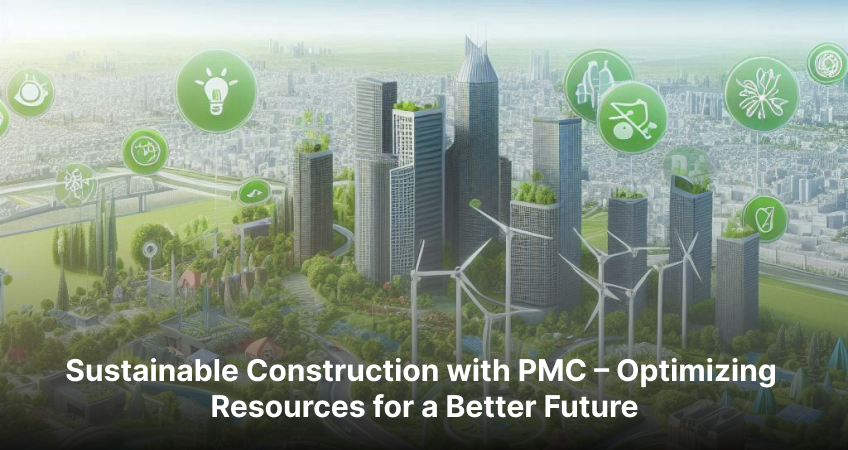Sustainable Construction with PMC: Optimising Resources for a Better Future
Why Sustainable Construction Matters
- Environmental Impact: Construction is responsible for 40% of global energy use and 33% of carbon emissions.
- Urban Strain: Rapid development in cities like Surat leads to overuse of resources, pollution, and waste.
- Climate Resilience: Rising temperatures, floods, and environmental degradation demand adaptive, eco-friendly building practices.
Role of a Project Management Consultant (PMC) in Sustainable Construction
A PMC is a strategic enabler of sustainable construction by integrating resource-efficient planning, eco-design principles, and lifecycle thinking throughout the project.
Key Ways PMC Drives Sustainability & Resource Optimization
- Material Efficiency
- Eco-Friendly Materials: PMCs promote the use of recycled, locally sourced, and low-carbon materials (e.g., fly ash bricks, bamboo, green concrete).
- Waste Minimization: Implement Just-In-Time (JIT) delivery and efficient procurement to reduce onsite waste.
- Life-Cycle Cost Analysis: Consider the total cost of ownership, not just construction costs.
- Energy Optimization
- Green Building Design: PMCs coordinate with architects and engineers to implement passive solar design, natural ventilation, and daylighting.
- Energy Modelling: Run simulations during the planning phase to optimize HVAC, lighting, and insulation choices.
- Integration of Renewables: Help incorporate solar panels, energy-efficient systems, and smart energy grids.
- Water Management
- Rainwater Harvesting: Integrate storage and filtration systems.
- Greywater Recycling: Design systems for reuse in landscaping or flushing.
- Low-Flow Fixtures: Enforce water-saving technologies in design specs.
- Green Infrastructure
- Urban Landscaping: Promote use of native plants, green roofs, vertical gardens.
- Biodiversity-Friendly Projects: Avoid ecological disruption during site selection and planning.
- Smart Urban Planning
- Transit-Oriented Development (TOD): Promote pedestrian access, cycling paths, and connectivity to public transport.
- Mixed-Use Planning: Reduce dependency on vehicles by integrating residential, commercial, and recreational spaces.
- Disaster-Resilient Infrastructure: Plan for climate events, like Surat’s periodic floods.
- Performance Monitoring & Certifications
- Green Building Certifications: Guide projects to meet LEED, IGBC, or GRIHA standards.
- KPIs for Sustainability: Set and monitor carbon footprint, energy use, water savings, and construction waste metrics.
- Tech Tools: Use BIM, GIS, and IoT for real-time efficiency monitoring.
- Capacity Building & Awareness
- Train Workers & Contractors: PMCs ensure all teams understand and implement sustainable practices.
- Stakeholder Alignment: Help clients, municipalities, and communities embrace the long-term value of sustainable investments.
Benefits of PMC-Led Sustainable Construction
| Area | Benefit |
| Environment | Reduced emissions, pollution, and waste |
| Economics | Lower operational costs, longer asset life |
| Social Impact | Healthier spaces, better living conditions |
| Resilience | Climate adaptation and disaster readiness |
| Compliance | Easier regulatory approvals & green credits |
Real-Life Example: Surat’s Smart City Initiative
- Tapi Riverfront Project: A PMC can ensure eco-sensitive development along the river.
- Flood-Resilient Drainage Planning: Optimize design for permeability and water retention.
- Urban Redevelopment: Replace dilapidated buildings with energy-efficient, water-saving green structures.
Conclusion
Sustainable construction is not a luxury—it’s a necessity.
A Project Management Consultant ensures that sustainability is not an afterthought but a foundational strategy—from design to handover. With their technical expertise and holistic planning, PMCs enable resource optimization, eco-conscious development, and a better future for cities and communities.


